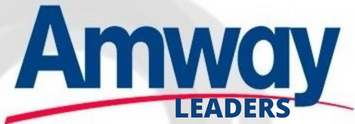Many people consider reaching the platinum level in Amway to be a noteworthy accomplishment in the company's history. While it may be rewarding to reach that level and receive recognition from the Amway organisation, I would want to point out that a study conducted in Wisconsin by the state's attorney general indicated that platinums, on average, were losing money. Although the report is a little out of date, I will point out that there are now even more expenditures associated with running an Amway business than there were previously. In this section you'll find information on voicemail, books, functions, standing orders and delivery. It's feasible that platinum prices are losing more value today than they were when the Wisconsin study was conducted, in my opinion.
It is not uncommon for a normal platinum group to have 100 or more downline IBOs. As a result, it is reasonable to conclude that less than one percent of IBOs can achieve that level. It is also difficult to maintain that level, according to reports. When one takes into account those who give up, it is possible to conclude that just a fraction of one percent of people ever attain platinum. This is also confirmed by Amway.com, which states that A total of 26% of IBOs achieve the Gold level. That's about 1 in every 400 people. In his prime, my former upline diamond had seven frontline platinums under his belt. In fact, six of them were at the ruby level. Today, none of them is a member of the platinum club. To be honest, I'm not even sure if any of them are still involved in the Amway business now. It follows that achieving platinum is improbable, and that maintaining that level is much more unlikely.
What serious potential business owner would ever consider starting a legitimate firm in a field where the odds of success are so slim to non-existent? Even those who earn platinum status are likely to lose their position in the hierarchy. If platinums are unable to keep their level, it is easy to understand why there are former diamonds in circulation. Many people seem eager to take a chance on an Amway business because the start-up costs are so little. After all, what is the point of putting up all of this effort if the likelihood of earning a profit is so remote?
To make matters worse, many independent business owners (IBOs) put a significant amount of time and money into developing an Amway business that is unlikely to generate a profit. In terms of tools, I'd estimate that the average serious IBO would spend $250 or more every month, with Amway items accounting for approximately $250 to $300. If you had placed that money in mutual funds over a number of years, you would have a much higher chance of realising some of your goals. Even putting the money in a savings account would put you in a better position than the great majority of IBOs, though. A serious business owner would want to know what their realistic chances of making money are before starting their venture. For some inexplicable reason, Amway prospects and Independent Business Owners (IBOs) tend to be blind to this truth. They only think about the best-case situation or what is physically achievable. They appear to be blind to what is most likely.
Due to the fact that uplines are in the business of selling tools and distributorships, this is the case. These people are not genuinely concerned with your long-term, sustainable success. If you still don't believe me, try stopping all of your standing orders and function tickets and watch how long it takes for you to be edified and provided assistance from upline. In all seriousness, would a genuine business owner be interested in a possibility of success of less than one percent?


0 comments: